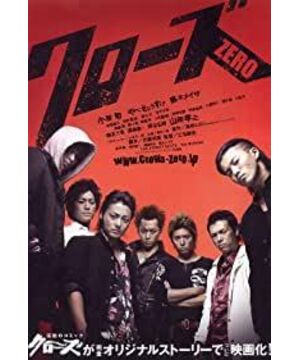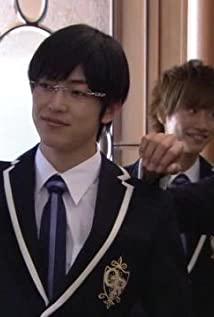The movie "Hot-Blood High School" is a campus action movie directed by Takashi Miike, written by Shogo Muto, starring Shun Oguri and others. The film is adapted from the manga of the same name and released in Japan on October 27, 2007.
The film tells the story of a gang war between a group of bad students who like to fight at a notorious "Lily of the Valley Boys' High School".
In the first fighting scene of the film, the three opening scenes were not given to the teacher, but to students of different shapes, some standing, some sitting. After the teacher finished speaking, they were scattered. People applauded, which shows that this is a school without order. Unlike the school we know, in this school, students occupy a dominant position and do not need to respect teachers. Invisibly, it is building momentum for the next fight in the film.
The following shot is of a student giving an admission speech. According to the general shot of a speech, the next shot should be a close-up or a medium shot of the character, but in this speech, the director gave a panoramic view, and the panorama suddenly changed. The speaker's status was weakened, coupled with the speaker's clumsy movements, the students below let him roll down without mercy, and it can be seen that this group of students is lawless. As the camera continued to advance, two groups of people stepped forward and walked hurriedly. The group in the foreground walked to the middle shot and slapped the person next to them without warning, and then the two sides began to argue. The student in the middle shot went straight to the podium to reach the background. When he kicked the classmate who was giving the speech to the ground, everyone in the audience boiled over. How could he act chaotic? The simplest and crudest way is to see everything in disorder. Later, he used a long-lens panning method, moving over the rows of people's heads, and shooting upwards, coupled with his speechless speech, to create the role of a school bully.
When he just put down the microphone and was about to step down, but the characters who were about to appear below made him unable to step down, calling him his name, Ryugu Genji, and calling him "boy", which is an insult to a person who wants to be the boss. behavior, he roared angrily for the man to come forward. In the next shot, from the dense crowd, a man suddenly stood up abruptly, with his pockets in his pocket, and came aggressively, Longgu Yuanzhi jumped off the stage to fight, and all the people behind him surrounded him. Behind the provocateur, his helper also appeared, how can the bad guys be made worse and the wicked more wicked? That is to find someone who is worse and fiercer than him to make a comparison, so that the characters are portrayed from the side. The teacher next to him was powerless to stop it, but no one listened to him. Rule breakers always have a comparison exhibit, and the reference for order here is the incompetent teacher.
At the moment before the war, the accumulated power erupted, and all the people stood up fiercely and fought directly. With the exaggerated use of sound, the visual and look and feel were relatively good. , but the two panoramas in the back feel that the expressiveness has been weakened again, which makes people feel relieved.
Through the analysis of the first scene, the focus of this film is not on the blood and cruelty in the fighting process, but on the creation of the entire atmosphere before the fight and the pursuit of formality in the fight.
In Katagiri, I taught Takiya Genji how to conquer the class. The switching between scenes and scenes uses action editing to transition. Although it is a bit stiff, the next action is to open the door. Opening the door is equivalent to pulling the curtain on the stage. Genji pulls the door. The scope is large, the speed is fast, and the characters are well portrayed. When he opens the door, he asks who is the boss of your class. The camera is reversed, and the whole class is staring at him. The sense of form of this group portrait is used too much in the film. Second-rate.
This film brings Takashi Miike's violent aesthetics to the extreme, embodies the unique sense of ritual on the battlefield, and is a rare campus hot-blooded film.
View more about Kurôzu zero reviews










